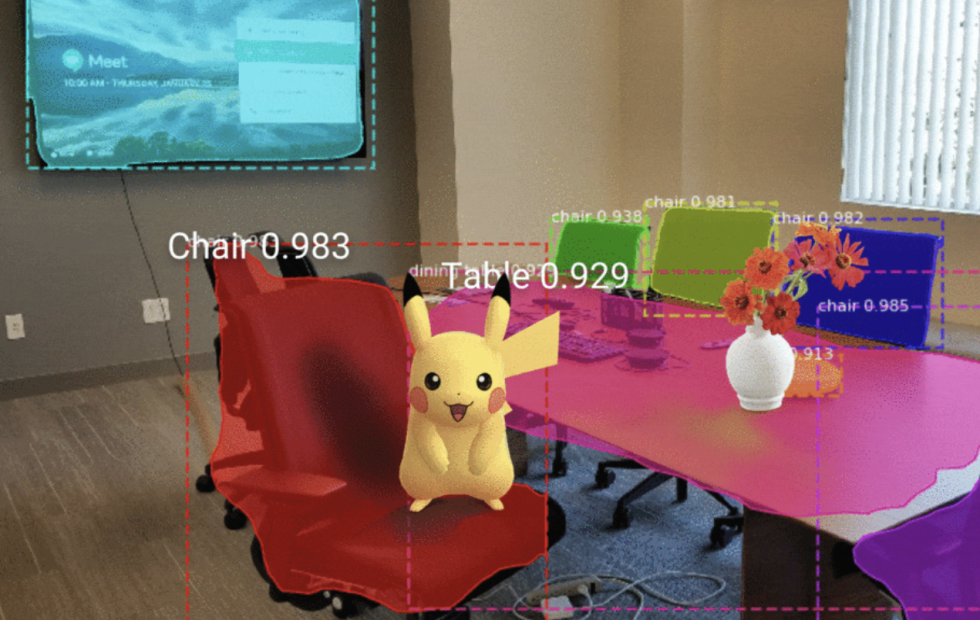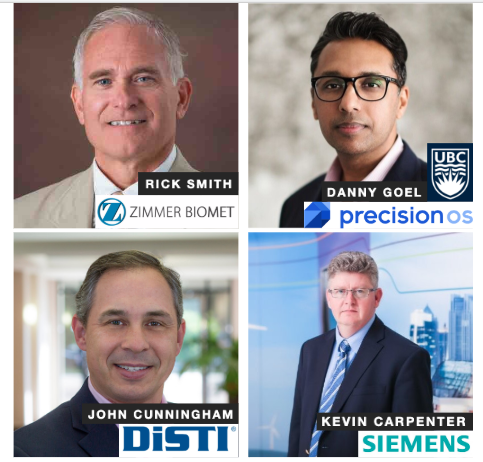Holographic display is a method of displaying visual content that is only now making early steps into the market. It is based on a totally different physical principal to what you usually find in the world today. When you look at a normal display you are basically looking at a big array of pixels, where each pixel gives some colour depending on a filter that is put in front of it.
You see an image but that is not really how we see the real world. When you look at the world around you, you are not seeing a 2-D pixel array of colours, you are seeing light reflecting off surfaces and that light adding up in complex ways to give interference patterns that your eye then interprets as an image.
So say you want to create the perfect display system. You would need to mimic the physical process that natures uses in order to relay visual information to you. However, rather than relying on actually reflecting light off things, we can compute the light patterns that are reflected from objects, and represent them on a display device. We have to compute the entire wave-front reflected from a given object so that it encodes all the visual information, including all the object’s depth information. This complex pattern is known as the hologram. We reflect light off the hologram to your eye and you see a 3D holographic image.
This contrasts with what is widely described in the ARVR industry as hologram - they often use it to mean any virtual object placed in a scene. When we say hologram, we mean in the full academic sense of the word - creating a full 3-D object using only the interference properties of light.
VividQ started off in 2017 with a very rough prototype. We managed to get some initial investment and for the last two years we have been building that into product. It turns out it is very difficult to sell just algorithms to people so we have actually had to make the entire software pipeline ourselves - everything from how you capture your 3-D data from 3-D sources like game engines and 3-D cameras, through to how you output that onto a display device that can support holographic display.
Now, an optical engineer or any researcher can take our entire software package, drop it into their system and have an end-to-end solution that allows them to connect their source data with the display and create genuine 3-D images.
The technology behind the software
There are several key components that are required for holographic display. You cannot just use a normal display like what you would find on an iPad or TV. The way we generate the hologram is by reflecting light off a display that is showing a particular pattern of phase.
This phase pattern is what we call a hologram - we reflect light off that and then the wave-front of the light is modulated by that pattern which appears as an object when you look at the display. Because of that we need a type of display known as a spatial light modulator. This enables you to create that phase mask and to update it as fast as you like so you can have a moving image.
Our software is currently built on top of an Nvidia stack so we rely heavily on GPUs. In fact our underlying code is written in very low level CUDA C – NVidia’s GPU language - and then on top of that it has a C++ layer and then a C API so that the developers can easily connect and code against it to hook up their SLM or into their content.
In terms of the other technologies we support, as I said we talked to Unity, Skyrim, and we are adding support for Unreal right now. We are compatible with a host of 3-D cameras like Stereolab Zed cameras, the PMD Picoflexxf and a few others. We have mostly got content covered, and it should be relatively easy for engineers to implement.
What types of people or industries should use this software?
Anyone designing holographic display for basically any purpose should use this software. We have identified augmented or mixed reality as the first potential target. In our view, for MR specifically to achieve real consumer use, you need to overcome several of the display issues that it currently has.
A massive topic of the conference this week has been on something called the accommodation vergence conflict. This is the effect you get in current generation displays when your eyes are forced to converge on a certain object, but because the information your brain presents to your eyes is fundamentally two dimensional, your depth of focus is not where you are converging your eyes.
Imagine you are always focusing here, but your eyes are being told the object is over there. This is a very confusing sensation and has caused a lot of the nausea, headaches and dislocation from reality people experience when using MR or VR. Holographic technology naturally fixes this because you are presenting the eye with a genuine 3-D image, and so you do not run into the same problems.
VividQ will transform display technology
I think that holographic display will be the dominant display technology of the next decade. VividQ will be the underlying software powering all of that. It will be in the same way that companies like ARM are basically the supplier to everybody running mobile phone chips and so forth.
You will find our software embedded in all your devices that has a holographic display. Holographic display will be the thing everyone uses, because once you have full 3-D, where you don’t need to wear glasses or any of that stuff - why would you ever have a 2-D screen again?
Visit our website here www.vivid-q.com
Source










